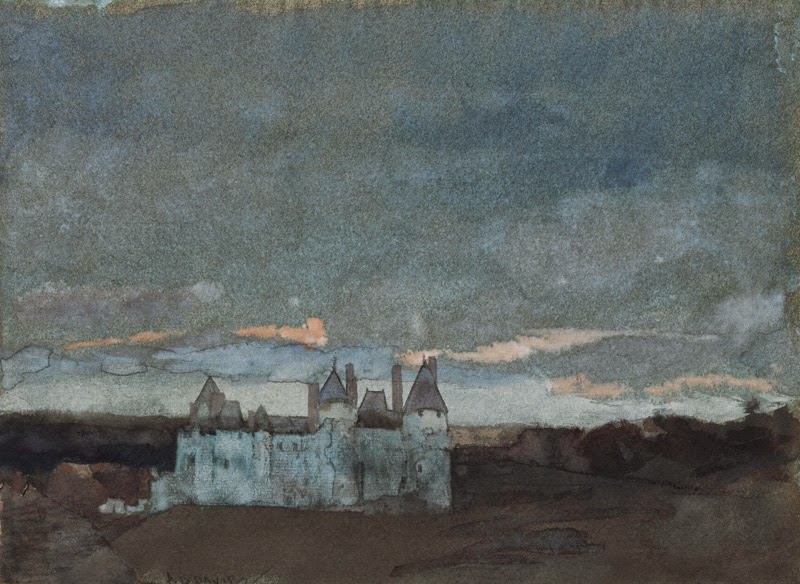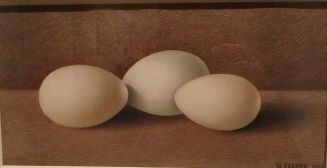 You rarely hear about a contemporary watercolorist setting the world ablaze with a traffic-stopped gallery show or museum exhibition. Or, for that matter, setting auction records. And let’s face it, in some ways, if something doesn’t happen in the contemporary art world, it doesn’t happen in the art world. It is that myopic (or blindered, choose your description).
You rarely hear about a contemporary watercolorist setting the world ablaze with a traffic-stopped gallery show or museum exhibition. Or, for that matter, setting auction records. And let’s face it, in some ways, if something doesn’t happen in the contemporary art world, it doesn’t happen in the art world. It is that myopic (or blindered, choose your description).
So I was very pleased when I received an announcement this spring that the Princeton University Art Museum was presenting Painting on Paper: American Watercolors at Princeton, through Aug. 30. I went and my review is in Wednesday’s Wall Street Journal. In my piece, headlined Reviving a Forgotten Medium, I took the time to relate a little history about watercolors in America, including this passage:
It was in the late 19th century, especially between 1870 and 1885—when artists actively promoted the medium and the American Watercolor Movement thrived—that watercolors hit a zenith. Yet well into the 20th century, museums regularly staged watercolor shows; the Brooklyn Museum actually held biennial International Watercolor Exhibitions, showcasing new ideas and trends, from 1923 through 1963. There are still shows of watercolors by geniuses like John Singer Sargent and the occasional broad survey. But somewhere along the way watercolors picked up an association with amateurs and lost their appeal for many professionals.
What major museum would organize a watercolor biennial today?
 The Princeton show is decidedly uneven, but I appreciated the opportunity to see works by some artists I knew little or not at all–like Thomas Charles Farrer, whose Three Eggs I cite in the review (shown at right)–and some different works by those I do, like two wonderful paintings by Arthur B. Davies–a beach scene called The Riviera and Chateau Langeais (above left). I appreciate the inclusion of folk art, too.
The Princeton show is decidedly uneven, but I appreciated the opportunity to see works by some artists I knew little or not at all–like Thomas Charles Farrer, whose Three Eggs I cite in the review (shown at right)–and some different works by those I do, like two wonderful paintings by Arthur B. Davies–a beach scene called The Riviera and Chateau Langeais (above left). I appreciate the inclusion of folk art, too.
The exhibit has a few masterpieces by Charles Burchfield and Winslow Homer (which beautifully illustrates my review, so see it at that link above) and some good works by the likes of Edward Hopper. The show is flawed because it is drawn mostly from the museum’s collection. But as I conclude in my review, “”Painting on Paper” is gratifying, its shortcomings offset by the very fact that it exists.”
I’d like to see another museum try this–by borrowing or from its own trove.
